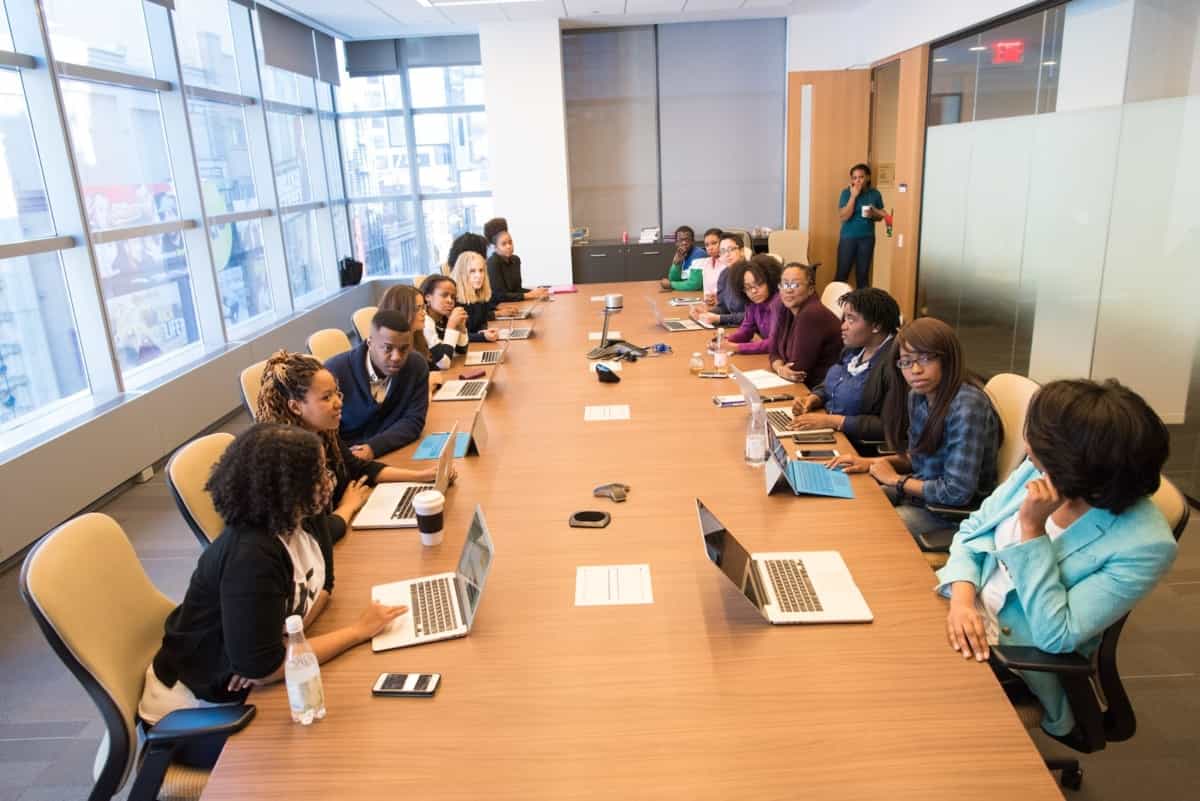Como director general de una compañía de consultoría, me he puesto a la tarea de abrir nuestra primera oficina en Colombia. Alguien podría preguntar: ¿para qué volver al trabajo presencial? ¿Acaso la idea es volver a la oficina todos los días? Este artículo, es mitad análisis sobre el diseño de un nuevo espacio de trabajo, y la otra mitad una reflexión propia sobre los desafíos que plantea, en el mundo de la tecnología, el pensar en un espacio propio dedicado.
La decisión no es simple, existe una clara tendencia en la industria al trabajo remoto. Y es que la escasez de talento en la industria de la tecnología ha puesto sobre la mesa la opción de trabajar desde cualquier lugar para empresas en el extranjero. He escrito algunos artículos al respecto que podrían interesarte:
- ¿Trabajo remoto o volver a la oficina?
- Nómada digital: el final de una era
- ¿Cómo vencer en la guerra por el talento TI?
- Tendencias laborales para 2023
Sin embargo, este artículo está enfocado en el trabajo presencial – y menos en el debate si debiéramos volver o no al trabajo presencial o las ventajas del trabajo virtual.
Trabajo presencial
Regresar a la oficina después de un período de trabajo remoto puede ser una transición desafiante para algunas personas. El regreso significa cambios en la dinámica de equipo, un aumento en la interacción social y un cambio de espacio. Estos cambios desde luego representan retos para todos nosotros, ya sea que regresemos al trabajo presencial todos los días, o algunos días a la semana – modelo híbrido, como nos gusta llamarlo.
Volver a la oficina, también plantea retos profundos para quienes dirigen empresas y equipos. Se dice que el trabajo presencial aumenta la productividad – aunque la evidencia parece ambigua, la tendencia de las grandes empresas es una sola: «volver al a oficina». Para quienes dirigen o lideran, la presencialidad es mejor para incrementar la productividad y el compromiso del equipo, para quienes no tienen personas a cargo y sus tareas son muy individuales, la productividad es mejor desde casa – solo contributors como los llaman en inglés. Todo depende de cómo interpretas el tiempo de trabajo y si éste incluye el desplazamiento a la oficina. Por ejemplo, para una persona en nivel directivo, el tiempo empieza y termina con el horario de oficina. Por el contrario, para el empleado, este tiempo contempla todo el traslado a la oficina, es decir, desde el momento de salir de casa.
5 razones para volver a la oficina
Existen varias razones por las cuales las empresas pueden decidir volver a la oficina después de un período de trabajo remoto. Algunas de estas razones para favorecer el trabajo presencial son:
- Mejora en la colaboración y la comunicación. El trabajo en persona puede ser más eficiente para algunas tareas, especialmente cuando se trata de discutir y resolver problemas en equipo.
- Mayor productividad. Algunas personas pueden sentirse más motivadas y productivas al trabajar en un ambiente de oficina estructurado en lugar de en casa.
- Mejora en la cultura laboral. El trabajo en persona puede ayudar a fomentar una mejor cultura laboral y un sentido de comunidad en el lugar de trabajo.
- Beneficios para la salud mental. El trabajo remoto a tiempo completo puede ser solitario y tener un impacto negativo en la salud mental de algunas personas. Volver a la oficina puede ayudar a mejorar el bienestar mental al proporcionar interacción social y un ambiente de trabajo estructurado.
- Mejora en la seguridad de la información. El trabajo en un ambiente de oficina controlado puede ayudar a proteger la información confidencial de la empresa. Esto puede parecer una tontería, pero si deseas trabajar para clientes interesantes en proyectos muy emocionantes, ten presente que la confidencialidad de la información y el aseguramiento de las comunicaciones va a ser un tema prioritario. No me imagino los diseños de los nuevos productos de Apple viajando por WhatsApp o compartidos en enlaces abiertos en la red. O trabajar para Blue Origin y enviar correos sin seguridad por Internet con el diseño de propulsores de última generación.
Es importante tener en cuenta que cada empresa y cada persona es diferente, y lo que funciona para una empresa o una persona puede no funcionar para otra. Por lo tanto, es importante evaluar las necesidades y preferencias individuales antes de tomar una decisión sobre el regreso a la oficina.
De estas cinco razones, quisiera resaltar tres grandes temas que, el no personal, mi invitan a crear una oficina propia: a) colaboración y aumento de la creatividad y productividad; b) cultura e identidad y; c) salud mental,
Productividad, colaboración y creatividad

La productividad, podríamos simplificarla como la relación entre el tiempo invertido y el resultado obtenido. Si dos personas invierten X número de horas en hacer algo, pero una de ellas tiene un mejor o mayor resultado, podríamos decir que esa persona es más productiva – dije que estaba simplificando. Con este análisis simple, podríamos decir que solo hay dos maneras de subir la productividad, reducir el tiempo invertido o aumentar el valor percibido del resultado.
No obstante, cuando hablamos de equipos o empresas, ya no hablamos de una sola persona, y contemplamos cosas como procesos, eficiencia y colaboración. Muchos hablan de sinergia, como la capacidad de dos o más personas de colaborar y obtener resultados exponenciales. Es decir, que dos personas no producen el doble, sino más del doble, tres personas producen más del triple y así sucesivamente.
Así es como colaborar es uno de los instrumentos para aumentar la productividad – grupal. Cualquiera que haya emprendido sabe que, para llegar lejos, hay que trabajar en equipo. La pregunta que surge es: ¿el trabajo presencial aumenta la colaboración?
Colaboración y virtualidad
Sabemos que la virtualidad afecta profundamente la dinámica de equipo. La virtualidad reduce la creatividad y variabilidad del trabajo (se percibe repetitivo) y promueve la creación de silos. Y no es poca cosa esto. Las herramientas colaborativas tienden a «simplificar» el acceso a los contactos con los que más interactuamos – para cosas de trabajo o no. Esto resulta en una suerte de miopía que nos limita a ver, solo lo que estamos acostumbrados a ver.
La virtualidad es ideal para tareas individuales, o muy enfocadas a labores intelectuales donde la colaboración no es tan necesaria. Pero, acaso una empresa puede funcionar solo con tareas repetitivas e individuales. ¿Cuál es el propósito de emprender entonces? ¿Si recuerdan que dije, «si quieres llegar lejos hazlo en equipo»?
Creatividad
Se dice que la creatividad es individual (la capacidad de generar nuevas ideas) y que la innovación es empresarial (la capacidad de transformar las ideas en nuevos productos, servicios, procesos o herramientas). Entonces, usando una lógica simple, si queremos empresas más innovadoras necesitamos personas más creativas – o al menos con momentos donde la creatividad se dispara – y espacios donde esas ideas se mezclan con otras y reciben el feedback clave para transformarse en innovación. El primer paso – ser creativo – tal vez lo puedes alcanzar en casa en pijamas, pero el segundo, requerirá colaboración y espacios de trabajo en equipo. ¿No sé si a ustedes les pasa, pero no creo que las videoconferencias por Zoom o Teams son el espacio idóneo para ser creativos y o colaborar?
Cultura e identidad

Volver al trabajo presencial promueve lo que se conoce como «sentido de pertenencia». Si puedes hacer tu trabajo en casa, sin salir, qué sentido tiene hacerlo para una determinada empresa. La ausencia de identidad promueve la rotación de personal y supone a largo plazo un sentido mercenario del trabajo.
Si bien, el trabajo se paga, no significa que no puedas vincular tus valores y proyección de futuro sobre la empresa para la cual trabajas. Esto se ha perdido un poco, y el propósito del trabajo remoto es obtener la mayor cantidad de dinero posible para trabajar desde donde nos plazca.
Crecimiento profesional y desarrollo
Pero si tu trabajo se puede hacer virtual, desde cualquier lugar, y ojalá con poca interacción humana, ¿por qué una empresa debería invertir en ti? ¿para qué desarrollar tus habilidades como líder o experto? ¿qué sentido tiene promoverte a nuevos cargos y retos?
El trabajo presencial plantea retos de interacción social que, nos guste o no, son claves para determinar el siguiente paso en nuestras profesionales – la interacción social provee información valiosa para todos: Los empleados que desean dar su siguiente paso (nuevos proyectos, otro cargo, liderar equipos, desarrollar una nueva habilidad técnica) y para los líderes que se acerca personalmente a otros miembros del equipo. Esto último es fundamental para apoyar el desarrollo profesional de las personas. ¿Cómo puedo ofrecer un feedback honesto u ofrecer un futuro atractivo si no conozco en absoluto a la persona detrás del cargo?
Salud mental

Cualquiera que se resista a esta realidad debe leer más. Con la pandemia y el trabajo remoto, muchos profesionales – y en particular los jóvenes – han sufrido un deterioro en su salud mental. El sentimiento de aislamiento y culpa vienen en aumento. Y es que estos sentimientos de «no estar haciendo lo suficiente» lleva a la mayoría a compensar de más – es decir, trabajar de más.
La salud mental plantea retos individuales – yo como persona como me cuido – y como líderes, qué decisiones o acciones tomamos como equipo para mitigar el impacto negativo y promover los espacios de cuidado y sanación. El teletrabajo tiene unas implicaciones físicas y mentales que no debemos descartar. Por lo tanto, debemos pensar el trabajo presencial y la oficina como un espacio de interacción social que, el solo uso, ayude a mitigar los riesgos planteados.
Papel del liderazgo en el trabajo presencial
Como líderes de un proceso de «retorno a la oficina» – uno o varios días al mes – supone algunas consideraciones importantes:
- Ansiedad y resistencia al cambio: Algunos empleados pueden sentir ansiedad o resistencia al cambio debido a la incertidumbre sobre cómo será el regreso a la oficina o debido a preocupaciones sobre la salud y el bienestar. Los líderes deben ser sensibles a estos sentimientos y proporcionar apoyo y comunicación clara.
- Problemas logísticos: El regreso a la oficina puede implicar problemas logísticos, como garantizar la seguridad y la distancia social en el lugar de trabajo, y asegurar que se cumplan las regulaciones y las pautas de salud y seguridad. Los líderes deben ser proactivos al abordar estos problemas y proporcionar información clara y actualizada a los empleados.
- Problemas de equidad: Algunos empleados pueden tener dificultades para volver a la oficina debido a responsabilidades familiares o problemas de salud. Hay evidencia de que para las mujeres aún asumen gran parte de las responsabilidades del hogar – como el cuidado de los hijos. Y en este sentido, volver a la oficina puede obligar a parte de la población a renunciar. Los líderes deben ser sensibles a estas situaciones y proporcionar soluciones de trabajo flexibles para garantizar la equidad. Hay que comprender las particularidades de cada miembro antes de exigir de manera contundente un regreso total al trabajo presencial. Así mismo, comportamientos y prejuicios tienden a suavizarse en la virtualidad, pero puede que afloren con fuerza al retornar a la oficina. En una video llamada con fondos virtuales, todos parecemos iguales, pero tal vez no es así presencialmente y cara a cara, y nuestras diferencias – tan valiosas para la diversidad – pueden hacerse más evidentes y disparar comportamientos inesperados en algunas personas.
- Problemas de productividad: Los empleados pueden enfrentar problemas de productividad al volver a la oficina después de un período de trabajo remoto. Los líderes deben proporcionar apoyo y recursos para ayudar a los empleados a adaptarse al cambio y maximizar la productividad.
- Problemas culturales: El regreso a la oficina puede afectar a la dinámica de equipo y la cultura laboral. Los líderes deben ser conscientes de estos cambios y trabajar para fomentar un ambiente de trabajo positivo y colaborativo.
De igual manera, el trabajo presencial supone:
- El diseño de un área de trabajo agradable.
- La promoción de actividades de crecimiento y desarrollo profesional – por qué no personal.
- La construcción de espacios de feedback, mentoría y coaching que puedan fortalecer las relaciones entre los líderes y los miembros de los equipos.
La nueva oficina y el trabajo presencial
La oficina tradicional supone varios retos. Y su diseño realización puede parecer contradictorio y negacionista. Así que vamos por partes.
Teletrabajadores y asistir a la oficina
La oficina es hoy un espacio para colaborar, promover la creatividad y socializar. Si tu trabajo es muy individual, seguramente ir todos los días a la oficina no hace mucho sentido – y menos en traje formal como sucedía no hace mucho tiempo.
Así mismo, exigir a personas que viven en otras ciudades o a gran distancia (o tiempo) de la oficina, tampoco hace mucho sentido. Acá es importante aclarar que la oficina debería ser un lugar relativamente cercano a tu lugar de vivienda – yo asumo no más de una hora de tiempo por trayecto.
Ubicación de la oficina
Gracias a una conversación con mi hermano, desarrollé una hoja de Google Sheets que calcula el tiempo medio de transporte y la distancia para un conjunto de empleados. Así, escoger la ubicación de la oficina es un ejercicio más objetivo y orientado a reducir el impacto en cada individuo y en el ambiente – menos tiempo de tránsito es consumo y menos contaminación.
La ubicación de la oficina no debería ser una decisión únicamente económica. El tiempo de los asistentes, el consumo de combustible, la cantidad de trayectos o trasbordos de transporte público hay para llegar a la oficina. ¿Qué porcentaje de personas esperan asistir a la oficina?
Una gran oficina o muchas oficinas
Esto depende mucho de la naturaleza del trabajo, en mi caso, tengo equipos pequeños e incluso «rangers» – personas que trabajan solas para clientes o equipos remotos. Así que para mí no hay discusión, es mejor tener varias pequeñas oficinas distribuidas en la ciudad – o varias ciudades – que una sola oficina grande donde asumo que todos deben llegar a trabajar.
Si lees regularmente mis artículos sabes que me llama mucho la atención el concepto propuesto por Robin Dunbar que supone un límite en la capacidad cognitiva de la mayoría de las personas para mantener relaciones de calidad con otras personas. Una especie de límite máximo en la cantidad de amigos cercanos que puedes tener. Este concepto se conoce como número de Dunbar y puede ser usado para establecer el límite de tamaño de un espacio de trabajo colaborativo.
Consideraciones finales del trabajo presencial
En un mundo ideal quisiera contar con pequeñas oficinas para 100 o 200 personas. Con espacios agradables para trabajar colaborativamente y espacios privados para tener conversaciones y llamadas privadas.
Imagino el poder para promover reubicaciones (dentro del mismo país o ciudad) de los miembros más comprometidos – una especie de beneficio de reubicación para que los miembros más valiosos de la empresa vivan entre 5 y 15 minutos de la oficina (ojalá caminando).
Asistir a la oficina no debería ser un problema. Para mí, es un grave error decir que la oficina física está destinada a desaparecer. Es tan estúpido como decir que ir a la universidad no sirve. Si bien, no hay un «one-size fits all» y que el mundo ofrezca diferentes caminos al éxito, la mayoría debería valorar parte de su tiempo compartido con sus compañeros de trabajo, así como compartir con compañeros de estudio puede ayudar con habilidades blandas en el futuro, y compartir con docentes puede ayudar a descubrir tu verdadera pasión.
Si tienes alguna experiencia sobre el regreso a la oficina y el trabajo presencial, así como historias sobre el tiempo en la oficina, te invito y agradezco si lo compartes acá como comentarios.

Alberto, yo creo que no es una decisión fácil, no es blanco o negro. Cualquier cambio implica una etapa de transición para adaptarse. El trabajo en casa podría ser un estímulo para el que logré cumplir los objetivos, si es que la virtualidad lo estimula. Los jóvenes quieren socializar, y en la casa será complicado, máximo si vive fuera d la ciudad. Pertenecer aún equipo es estimulante, discutir un tema, algunas veces rayando un papel o un tablero es exitante. Salir a almorzar en grupo, salir de la oficina los viernes a comer alitas y tomar cerveza,
jugar fútbol o rumbear lo necesitamos. Yo creo que debemos hacer algo como lo que hizo PMI, fortalezcamos valores, principios, bases de comportamiento, después la decisión que se tome es menos traumática. Ahorita yo haría oficinas y dejaría que cada uno decida si la casa o la oficina, con reglas y estímulos. Pero también programaría dos reuniones periódicas generales y «obligatorias» sin usar esa palabra, una para hablar de todo y otra para hablar de medidas y resultados del equipo.
Amigo James. Gracias por leer el artículo y, como bien lo comentas, no es una decisión fácil. IMHO el verdadero reto es lograr que las personas quieran venir a la oficina y de verdad vean valor de hacerlo, y no solo forzarlas a volver. Sin embargo, también existe una responsabilidad de los líderes de hacer visible el valor de venir a la oficina y de sus beneficios para el equipo y el negocio, y no limitarse solo a querer verlos sentados llenando el espacio vacío.
[…] generales, hay tendencias a escala global. En mi caso personal, he sido un abanderado de los modelos híbridos de trabajo y defensor de los espacios de oficina, he ejercido como Global Executive Sponsor para programas DEI y, no hace más de 6 meses, hemos […]